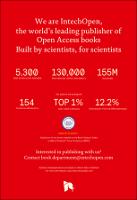Chapter Plantation Forests: A Guarantee of Sustainable Management of Abandoned and Marginal Farmlands
Author(s)
Bambe, Baiba
Daugavietis, Uldis
Lazdins, Andis
Lazdina, Dagnija
Makovskis, Kristaps
Daugaviete, Mudrite
Language
EnglishAbstract
The chapter summarises the research data on cultivating forest crops in abandoned and marginal farmlands (AL). The course of growth and productivity of different tree species in the local climatic conditions is clarified in a variety of agricultural soils. The research results show the most appropriate tree species for short-rotation or special end-use monoculture or mixed plantations, using Scots pine (Pinus sylvestris L.), Norway spruce (Picea abies (L.) Karst.), silver birch (Betula pendula Roth.), pedunculate oak (Quercus robur L.), grey alder (Alnus incana (L.) Moench), alder (Alnus glutinosa (L.) Gaertn.), wild cherry (Cerasus avium (L.) Moench syn. Prunus avium), aspen (Populus tremula L.), hybrid aspen (Populus tremula x tremuloides), and small-leaved lime (Tilia cordata Mill.). At the same time, research results show sustainability of management of plantation forests—positive impact on soil agrochemical properties, proportionate changes on above-ground vegetation, and improvement of economic benefits of farmlands.
Keywords
plantation forest, abandoned, marginal farmlands, forest tree species, soil agrochemical properties, above-ground vegetation, productivity, yield, biomassDOI
10.5772/intechopen.88373Publisher
InTechOpenPublisher website
https://www.intechopen.com/Publication date and place
2020Classification
Engineering: general


 Download
Download